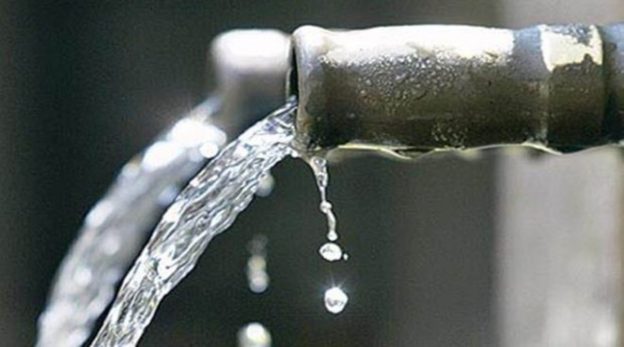As per the report of National Commission for Integrated Water Resource Development, the water requirement by 2050 in high use scenario is likely to be at 1,180 BCM, whereas the present-day availability of surface water is 695 BCM.
The post-pandemic era, rising population, rapid economic growth, and climate change are triggering enormous water availability challenges worldwide. We are at a critical juncture where the crises of food, energy and water calls for switching to sustainable development practices. In January 2022, World Economic Forum (WEF) released its latest Global Risk Report, listing natural water crisis among top 10 risks to humanity. As of now, around 36% of global population (2.8 billion people) live in areas of high-water scarcity; this could rise to over 50% by 2050.
The looming crisis has led to water becoming another traded commodity like gold and oil, putting basic human rights in the hands of financial institutions and investors. As water scarcity worsens, the rivalry across sectors and geographies will only get exacerbated. This will make businesses very vulnerable during crisis, particularly because they will be given the last priority for water allocation. This puts more pressure on them to optimise water use.
In our country, industry is the major water consumer after agriculture. As per the report of National Commission for Integrated Water Resource Development, the water requirement by 2050 in high use scenario is likely to be at 1,180 BCM, whereas the present-day availability of surface water is 695 BCM. The UNEP Finance Initiative highlighted the dynamics of water-related security with implications on businesses’ debt-servicing ability, credit worthiness, and reputation, core for arriving at ESG ratings.Drivers of water efficiency in several industrial sectors have drawn the attention of experts. I will focus on avenues for judicious water management in the power sector, considering that water is critical for power generation.
Public policy perspectives of water efficiency have changed significantly since nationally determined contributions and recent net-zero considerations have dominated the public discourse over the past 4-5 years. It is essential to examine water use across the value chain. The Centre gave impetus to improve water use efficiency by limiting it for thermal power plants. The sector, in turn, examined dry cooling with reference to technical and economic parameters to determine expected reduction in water usage. Around four years ago, the ministry of power also stressed on raising energy efficiency in the power sector. This was also when efforts to integrate renewable energy with thermal power gained momentum. Accordingly, the NTPC became signatory to UN Global Compact’s CEO Water Mandate. Inspired by the elements of governance, NTPC is evolving as a water steward, evident through our innovative seven-pronged approach adapted to installations with long commercial life—
- Mutually reinforcing a wastewater recycling system: This includes ash water recirculation and the toe drain recirculation in ash handling systems. As a preemptive strategy, dry bottom ash handling systems also help reduce water use.
- Increasing cycles of concentration in cooling water systems: A typical 660 MW closed cycle coal power plant (Super critical technology) operating at 85% PLF consumes around 16 MCM of water annually with ash water re-circulation system. Most of it is used in cooling (70%), followed by ash handling operations with flue gas desulphurization systems (8%) and demineralization (3%). These proportions vary depending on technology functions, fuel type, cooling systems, and operating efficiency/ load. The plant can save an additional 16% water through reduction in blow-down quantity just by increasing the cycles of concentration in circulating cooling water systems.
- Ensuring zero liquid discharge: Storm and plant water drains are separated to secure significant water savings.
- Rainwater harvesting
- A graded system to re-use and re-cycle effluents within plants
- Implementation of dry cooling systems: This is a viable option to reduce water use. Air cooled condensers have been integrated into NTPC’s operations at two power stations that are currently under construction and are designed to reduce water consumption by about 75%.
- Using alternate water for meeting all freshwater requirements: NTPC’s Ratnagiri Gas and Power Private Limited (RGPPL), Maharashtra, through strategic actions taken for rainwater harvesting and water reuse in plant processes, met 139% of its sweet water requirements internally in 2020-21 and supplies excess sweet water to the nearby villages.
A higher share of renewables in India’s power mix will alleviate the stress on water availability long-term. This includes opportunities to use renewable energy to extract water, supply, reuse and treat, and implement integrated firm-level regulations and market responses to reduce water related risks due to mismanagement. Largely, thermal power generation and freshwater withdrawal will either move to catchments that face lower water stress or adopt low-water-use cooling technologies. Upscaling the aforementioned technologies and process innovations to all thermal stations of country will be beneficial in the short and medium term. Arriving at nature-based solutions to enhance adaptation outcomes is crucial to ensure that water is used judiciously. Such interventions will strengthen India’s Jal Jeevan mission and ensure that clean drinking tap water reaches to all corners of our nation.
https://www.financialexpress.com/opinion/powering-water-conservation-thermal-power-generation-will-need-to-integrate-tech-process-innovation-to-ensure-judicious-use-of-water/2467182/





